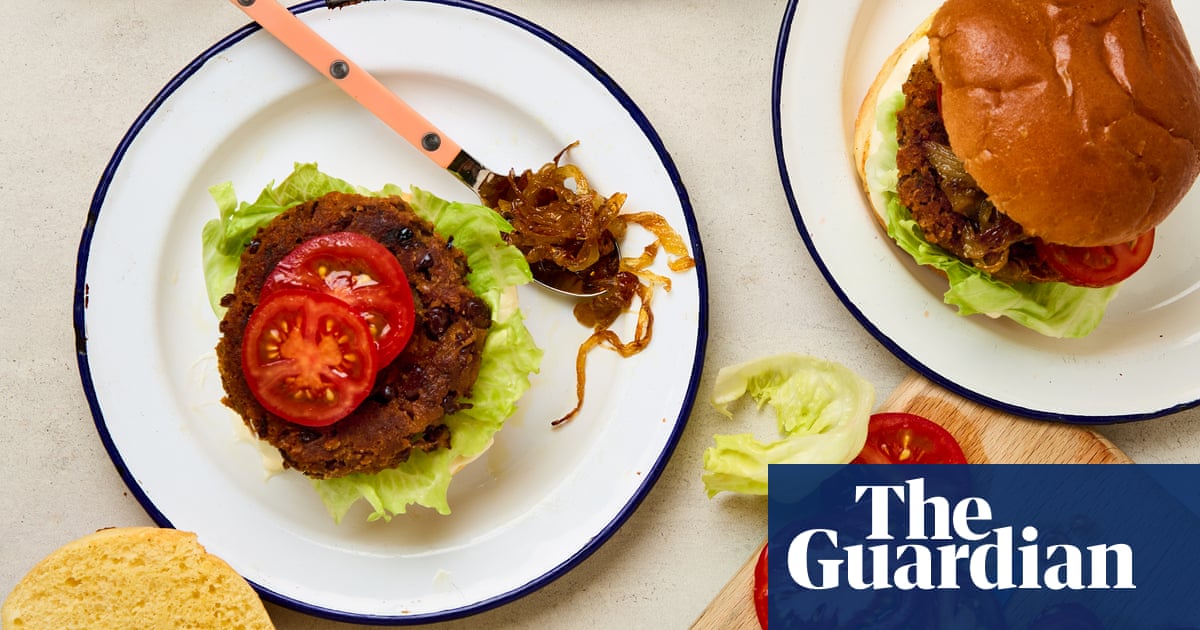This is exactly my kind of recipe. It’s easy, flavourful and, as a bonus, it’s crisp, too. In fact, it’s so simple, you could make the mixture with your eyes closed or, better still, give it to a six-year-old to do (they could also make it with their eyes closed). The key is the black beans, because they crisp up perfectly, and the condiments, which supercharge the flavour. There is one small catch, though: the onions need caramelising until they’re jammy, and ready to top the patty. You don’thaveto do this, but I’m here to tell you that it is worthwhile (especially if there’s a six-year-old already making the burgers).
If you like, prep the patties a day in advance and chill until needed.
Prep10 minCook30 minServes4
Prep10 minCook30 minServes4
Olive oil2 large onions, peeled and thinly sliced1 tsp salt400g tin black beans, not drained80g dried breadcrumbs1 tsp dried garlic granules1 tsp dried onion granules1 tbsp chipotle paste2 tsp dijon mustard1 tbsp tomato ketchup
To serve4 burger bunsVegan mayonnaiseIceberg lettuceFinely sliced tomato
Put three tablespoons of olive oil in a medium frying pan set over a medium heat and, once it’s hot, add the onion and a half-teaspoon of salt, and cook, stirring often, for 20 minutes, until quite reduced and frazzled. Take off the heat.
Meanwhile, spoon a couple of tablespoons of the liquid (aquafaba) from the tin of beans into a small bowl or mug and set aside. Drain and rinse the beans, tip into a large bowl and roughly mash; leave a few whole or in big chunks. Stir in the breadcrumbs, garlic granules, onion granules, chipotle paste, mustard, ketchup and a half-teaspoon of salt, then use your hands to mix until well combined; if need be, add some or all of the reserved aquafaba.
Divide the bean mix evenly into four, roll each piece into a ball, then put them one by one between two sheets of baking paper and press out to roughly 10cm- to 12cm-wide patties (I tend to make mine a wee bit bigger than the burger buns).
To cook the patties, put two tablespoons of olive oil in a medium frying pan, then fry two of the burgers for about six minutes in total, turning them once halfway, or when the base is crisp and golden. Remove and set aside, add another two tablespoons of oil, then repeat with the other two patties.
To serve, split and toast the buns, spread a generous dollop of mayo over the cut side of the bases and top with a leaf or two of iceberg lettuce. Add a bean patty and a couple of thin slices of tomato, and finish with a quarter of the caramelised onions. On with the lids and eat immediately.
